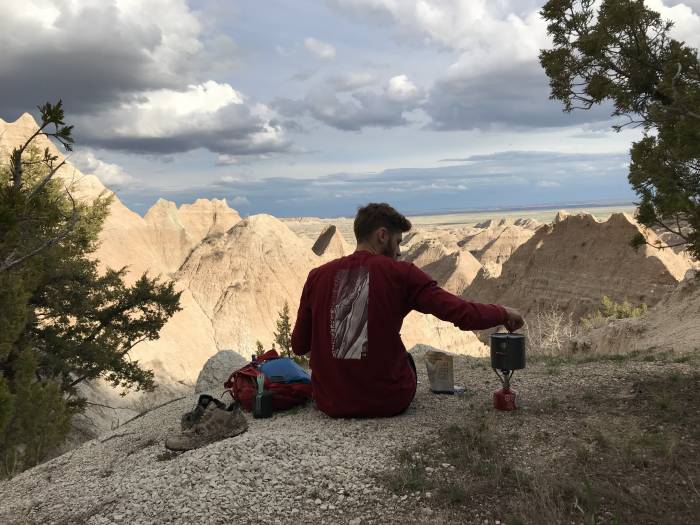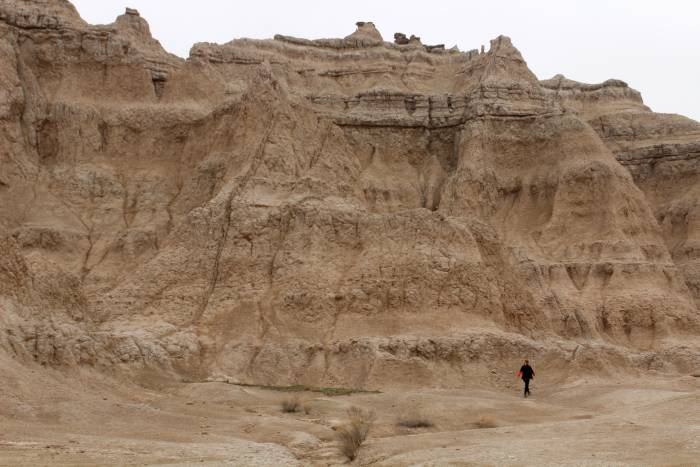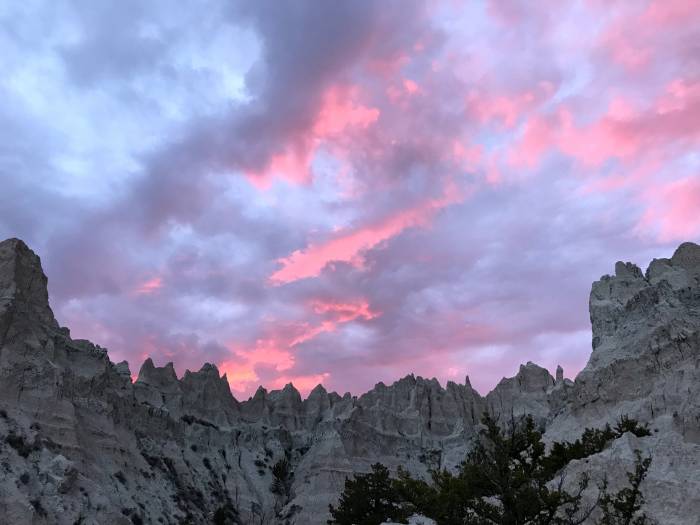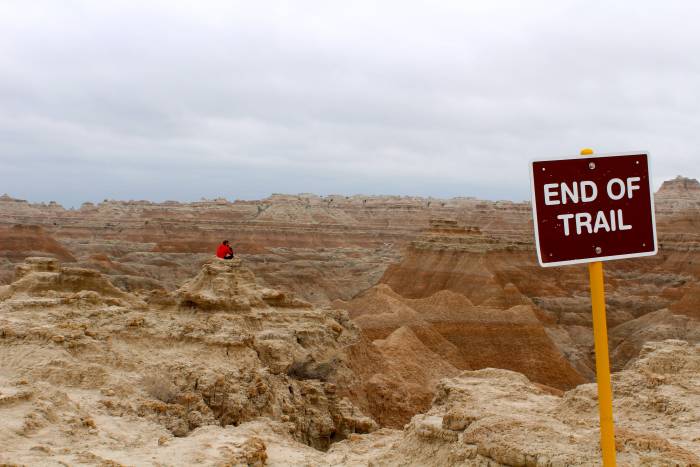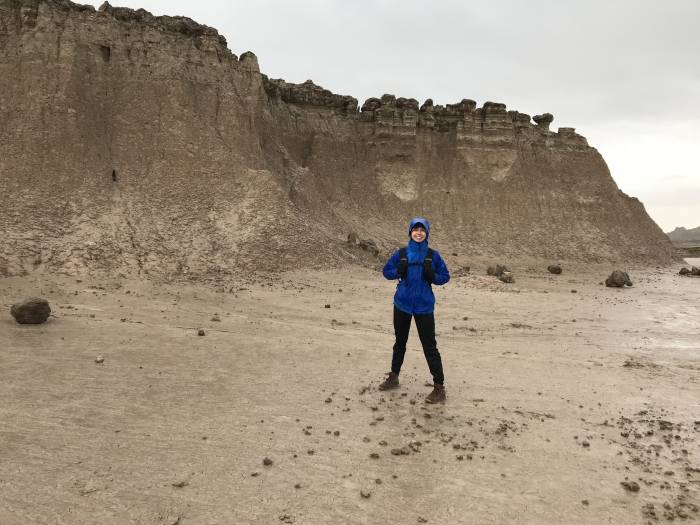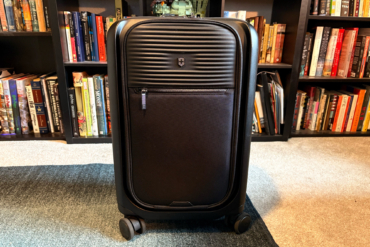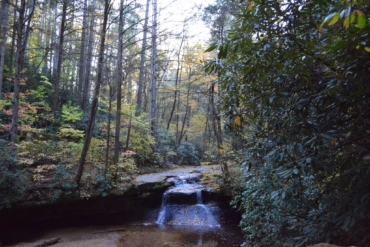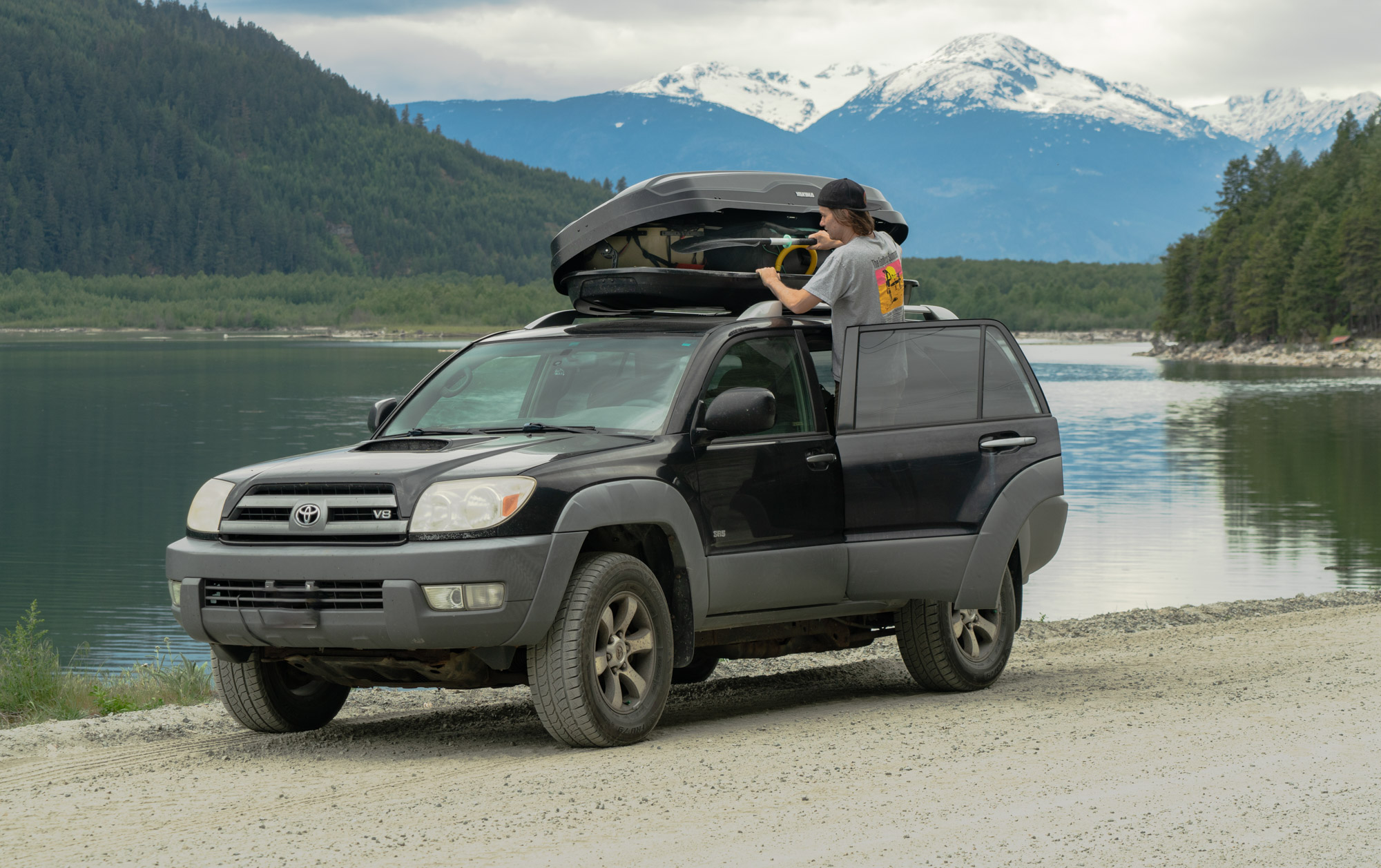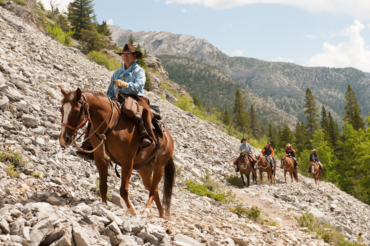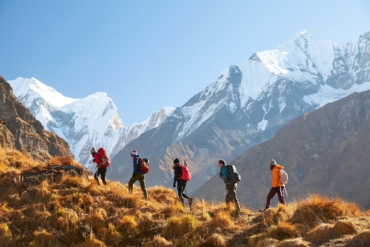Jagged badland peaks, colorful sunsets, and a thrilling backcountry adventure defined our time at Badlands National Park. Though just an hour from Rapid City, S.D., the park feels like another planet within its iconic 60-mile “Badlands Wall.”

Editor’s note: This article is part of our #NationalParksFieldTrip series, written by GearJunkie editor Kyle Nossaman as he and his wife visit national parks during a full year on the road.
Without any rivers, climbing crags, or nearby mountain bike trails, the park may at face value seem like a fair drive-through destination with easy-access vistas.
The badlands, though surrounded on all sides by prairies and farmland, compose a vast and rugged designated wilderness. This means that, though there are a few maintained trails, the entire park is open to off-trail exploration.
Once you leave the Badlands Loop Road and head out into the badlands themselves, the slot canyons, ridgelines, and peaks are yours to explore.
Our Preparation
Our visit to the park was from April 30 to May 3, still within its “off-season.” With that in mind, we opted for a first-come-first-served campsite at the Cedar Pass Campground just outside the park. We had no trouble finding a spot, but the campground did begin to fill during the weekend. If you plan to visit “in season” between May and October, you’d be better off reserving a site in advance.
No permits are required for backcountry exploration. We stopped by the visitors center upon arriving at the park for some trail recommendations and general info.
Badlands National Park: Best Adventures
1. Backcountry Camping
Seeing such vast badlands throughout the park, we were itching to spend a night among the towering walls. After some backcountry beta from a park ranger that turned out to be terrible (see What We Wish We Had Known below), we drove along the Badlands Loop Road until we found a parking lot (Conata Picnic Area) that looked out on some epic badlands formations.
Backcountry camping in Badlands National Park is surprisingly unrestricted. There are just a few key rules to respect: No pets, no campfires, and you must venture at least a half-mile off the road to remain out of site from it.
We blazed our own trail for about 3 miles toward cathedral-like spires, rounding a large formation to get out of sight from any roads. Our route led us along a narrow, dried riverbed that carved deeper and deeper into the earth as we went along. Eventually, we were snaking along in an epic slot canyon until we decided to scramble up a ridge and make camp among the towering walls.
With no one in sight, we cooked dinner, watched as the sunset lit up the spires, and listened to an owl deep into the night.
2. Door and Notch Trails
Among the park’s more breathtaking badlands, four popular short trails begin from the same parking lot. The 1.5-mile Notch and 0.75-mile Door trails were most exciting. Along the Notch Trail, an 80-foot, 50-degree rope ladder brings you up a badlands ridgeline. We explored off trail a bit and discovered a rewarding overlook. The views are amazing and well worth the time.
3. Sunsets
The multicolored badlands put on a show when the sun starts to set. Pink clouds above and the low dusk light accentuate the rock’s various colors and sharp ridgelines.
From the Cedar Pass Campground, the badlands lay to the east with open prairie to the west, and sunsets are exceptional. Deep within the badlands during our backcountry night, the sky lit up pink and purple high above the peaks. Plan to be outside as the sun goes down.
Tips and Tricks
Wear shoes that can withstand mud. The badlands are mostly dried mud that, if wet, sticks like wet cement. We got caught in some rain on the Castle Trail and found ourselves slipping around and coating our shoes with mud.
If you plan on doing some backcountry camping, do so within the iconic formations. Part of the park consists of open prairie, great for seeing bison. But camping deep within the badlands is an experience you can’t beat. Bring water, as there are no water sources, and check the weather before embarking to avoid a rainy and muddy mess.
The Badlands Loop Road is the most popular park attraction. It’s only a loop if you exit the park via the highway back to the entrance. Our tip is to drive the scenic portion within the park (some 22 miles) along the Badlands Wall, stopping at the various pullouts. Bring lunch and have a picnic at your favorite spot.
Most importantly, explore off trail! If you spot a cool formation at one of the pullouts, just walk out to it, being mindful of the loose dirt and steep drops. Instead of exiting the park at the end, just turn around and enjoy the views again.
What We Wish We Had Known
If you want to camp within the badlands, don’t drive out to the Sage Creek tent-only campground. The ranger at the visitor’s center recommended that we drive the Badlands Loop Road out to the campground and begin our backcountry journey from there.
Along the Sage Creek Rim Road, the formations fell away, leaving only prairie lands and grazing bison. We turned around and drove back along the Badlands Wall to instead backcountry camp among the formations. Park in any parking lot or pull off and simply start walking.
Don’t try to hike during or shortly after a rain. As previously mentioned, the ground gets sloppy and sticky with mud. It dries quickly with some sun, so if you can wait it out, your hike will be a bit more enjoyable.
Though not a massive park, Badlands National Park offered plenty of adventures during our four-day stay. Blazing your own trail into this wilderness is easy and encouraged, rewarding explorers with solitude and a playground of ridgelines, spires, and mini canyons.

